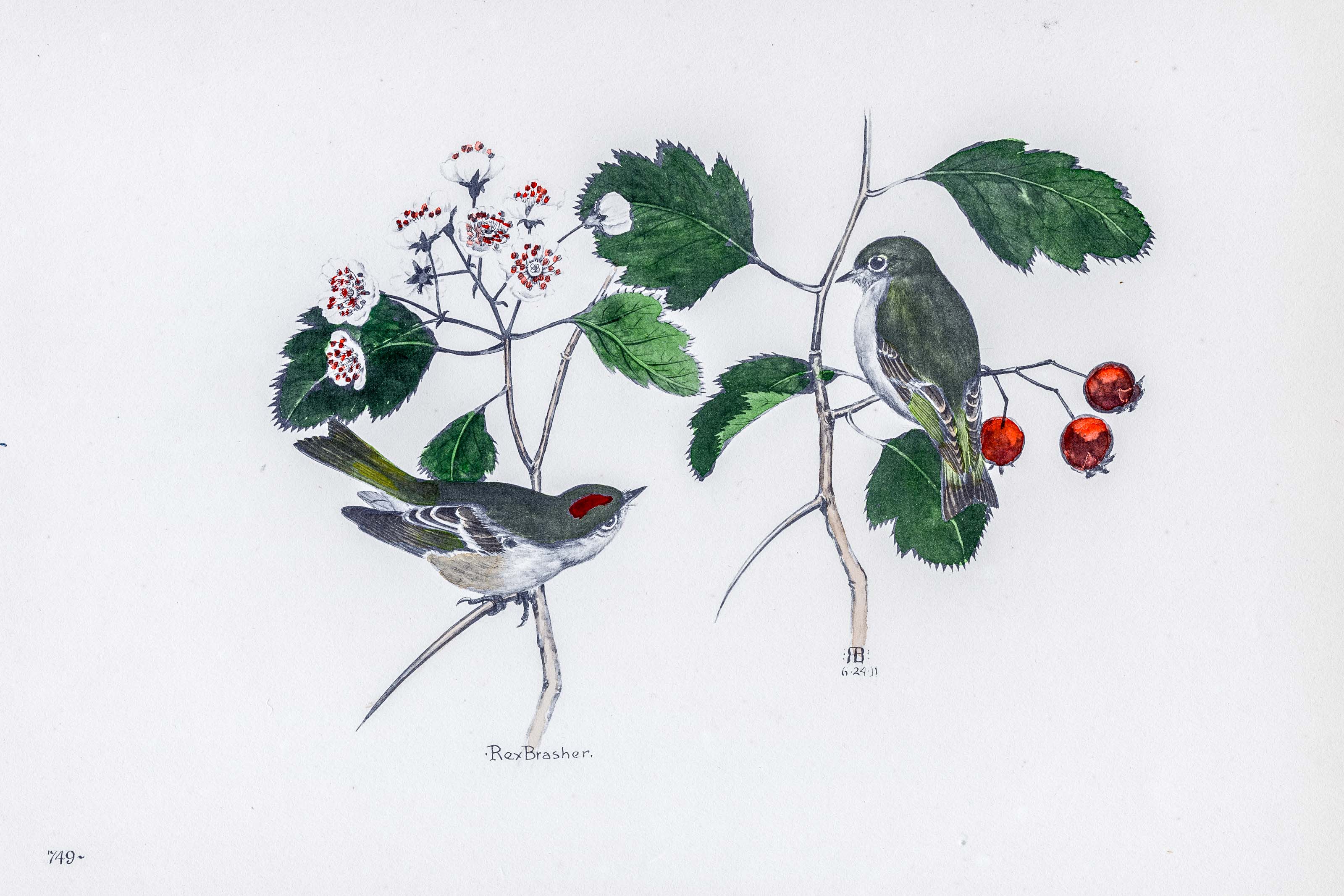
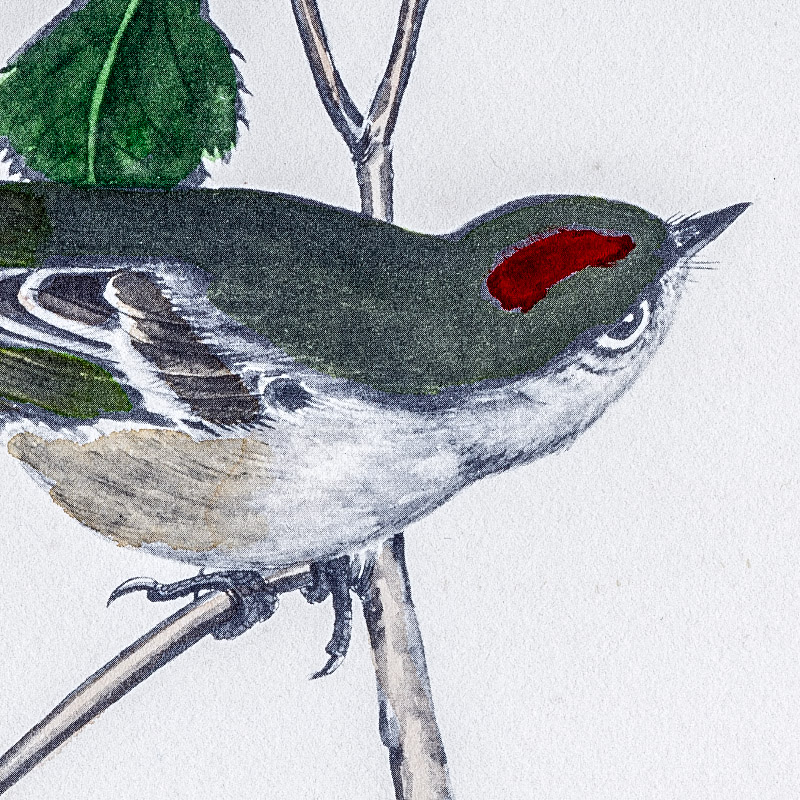
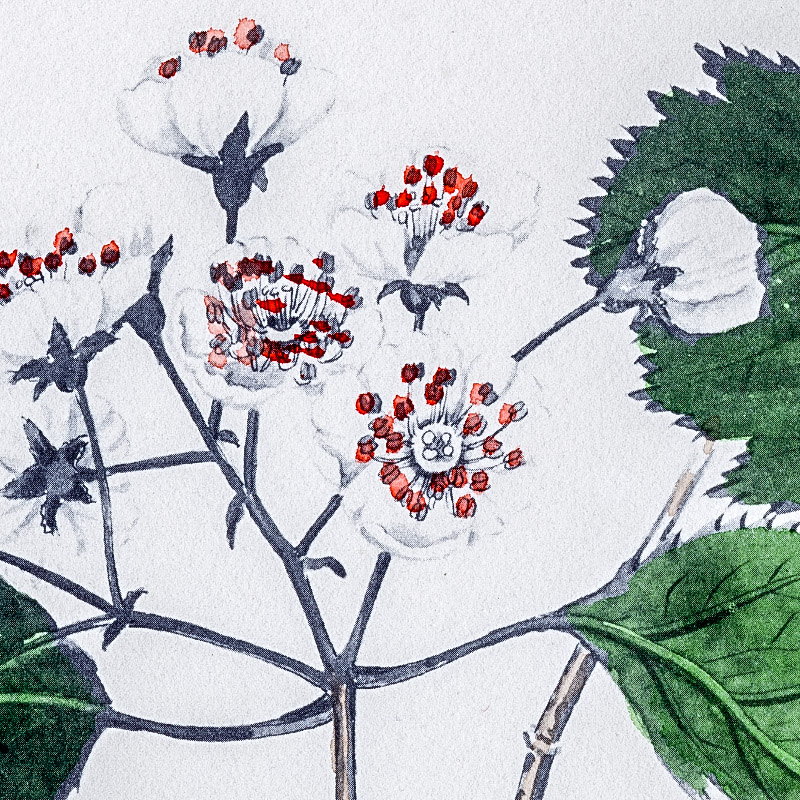
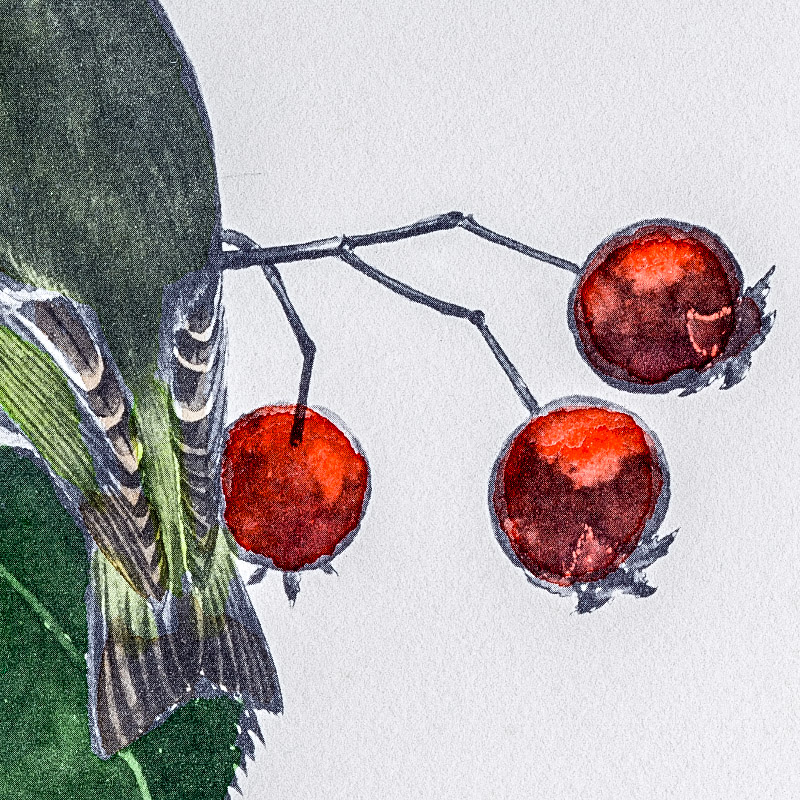
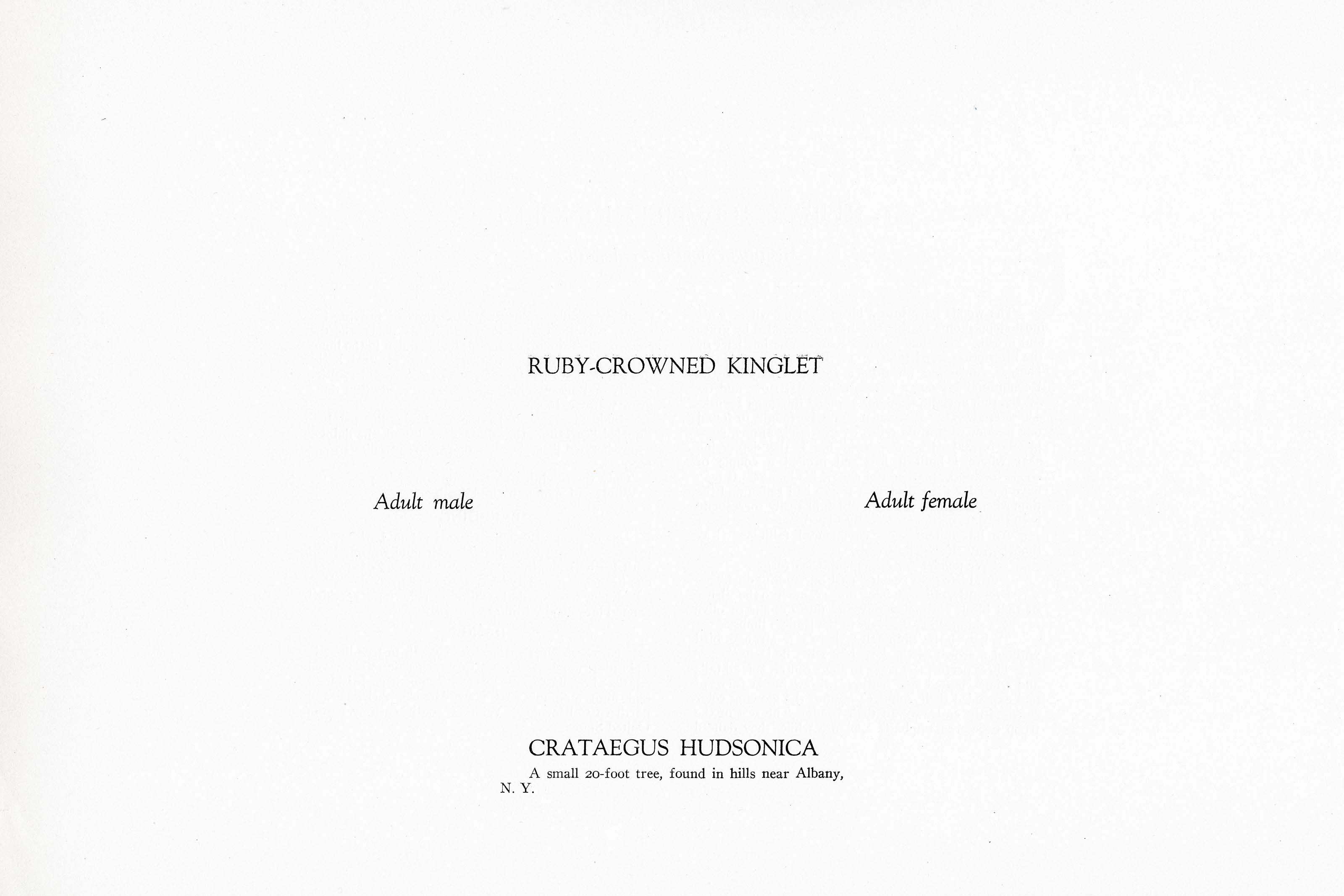
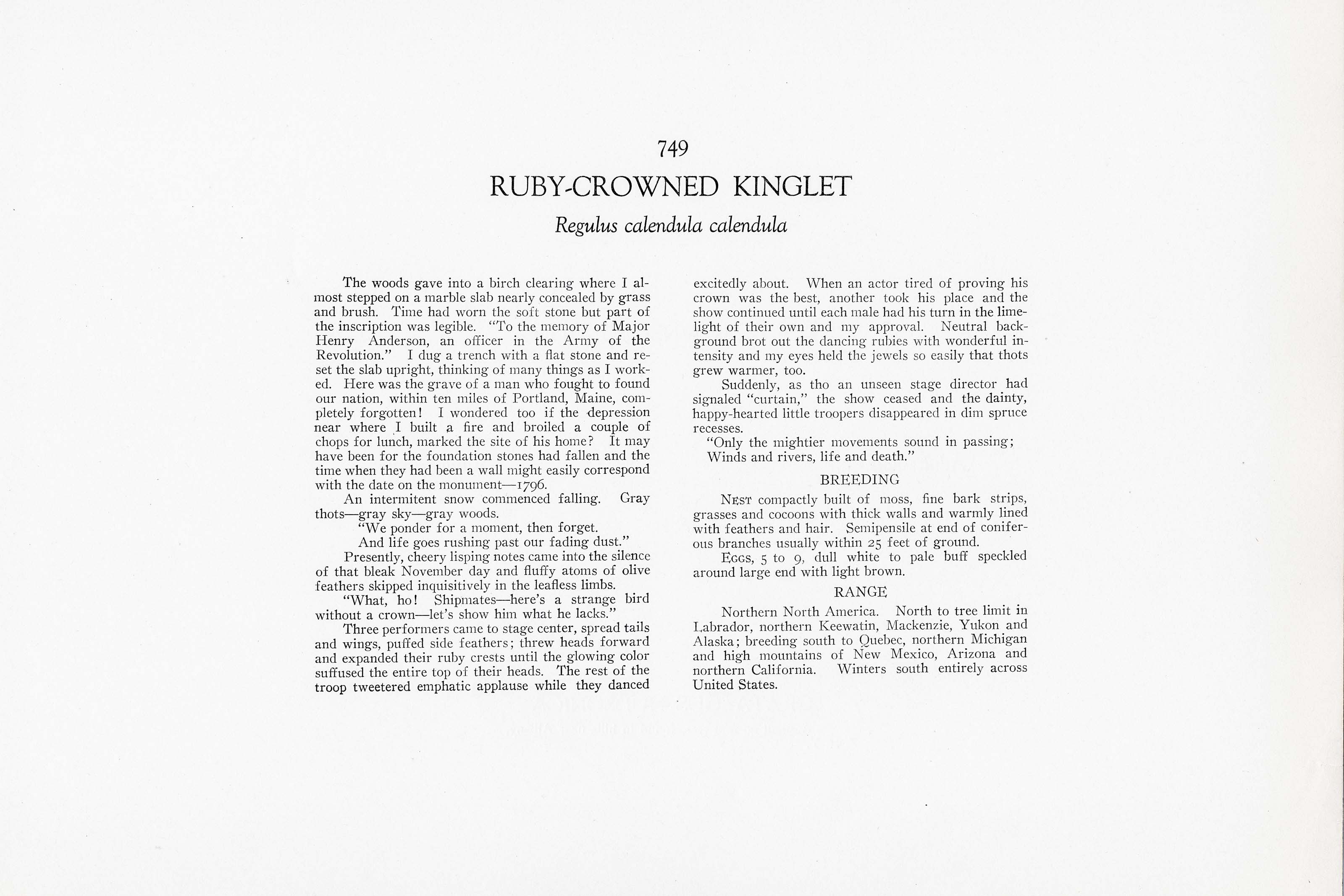

1911
1929
12
749
A team of dedicated board members, volunteers, and student interns has published every page in Volume 9. This volume includes 360 images of paintings and lyrical descriptions of birds, now available online for everyone to enjoy anywhere in the world. This is a monumental task. Each volume requires approximately 400 hours to photograph, edit, transcribe, catalog, and publish online. We need your support to complete this work.
If you're tech-savvy, have a good eye, are meticulous with details, and love structured data, please consider volunteering by emailing us at hello@rexbrasher.org.
We encourage all bird lovers and supporters to consider a monetary donation to support our mission to make Rex's work available for everyone. You can provide a one-time or recurring donation online.
The woods gave into a birch clearing where I almost stepped on a marble slab nearly concealed by grass and brush. Time had worn the soft stone but part of the inscription was legible. "To the memory of Major Henry Anderson, an officer in the Army of the Revolution." I dug a trench with a flat stone and reset the slab upright, thinking of many things as I worked. Here was the grave of a man who fought to found our nation, within ten miles of Portland, Maine, completely forgotten! I wondered too if the depression near where I built a fire and broiled a couple of chops for lunch, marked the site of his home? It may have been for the foundation stones had fallen and the time when they had been a wall might easily correspond with the date on the monument — 1796.
An intermitent snow commenced falling. Gray thots — gray sky — gray woods.
"We ponder for a moment, then forget.
And life goes rushing past our fading dust."
Presently, cheery lisping notes came into the silence of that bleak November day and fluffy atoms of olive feathers skipped inquisitively in the leafless limbs.
"What, ho! Shipmates — here's a strange bird without a crown — let's show him what he lacks."
Three performers came to stage center, spread tails and wings, puffed side feathers; threw heads forward and expanded their ruby crests until the glowing color suffused the entire top of their heads. The rest of the troop tweetered emphatic applause while they danced excitedly about. When an actor tired of proving his crown was the best, another took his place and the show continued until each male had his turn in the limelight of their own and my approval. Neutral background brot out the dancing rubies with wonderful intensity and my eyes held the jewels so easily that thots grew warmer, too.
Suddenly, as tho an unseen stage director had signaled "curtain," the show ceased and the dainty, happy-hearted little troopers disappeared in dim spruce recesses.
"Only the mightier movements sound in passing;
Winds and rivers, life and death."
NEST compactly built of moss, fine bark strips, grasses and cocoons with thick walls and warmly lined with feathers and hair. Semipensile at end of coniferous branches usually within 25 feet of ground.
EGGS, 5 to 9, dull white to pale buff speckled around large end with light brown.
Northern North America. North to tree limit in Labrador, northern Keewatin, Mackenzie, Yukon and Alaska; breeding south to Quebec, northern Michigan and high mountains of New Mexico, Arizona and northern California. Winters south entirely across United States.
A small 20-foot tree, found in hills near Albany, N. Y.